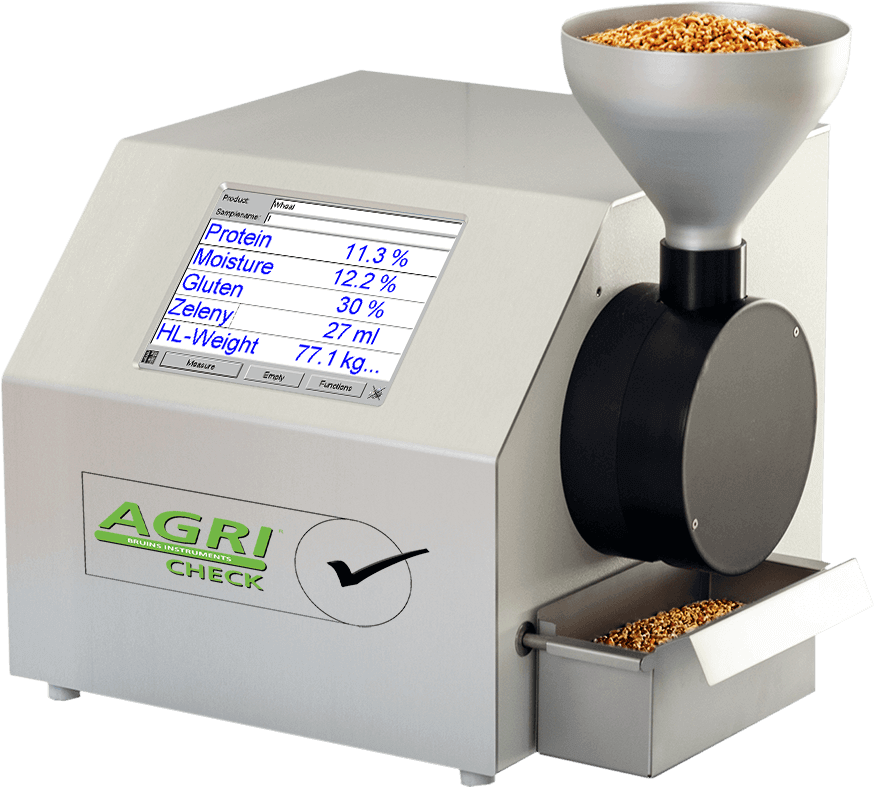Analysis of Yeast

Quality Control Solutions for Yeast as an Ingredient in Food & Beverage Production
Yeast is a microorganism widely used in food production for its ability to ferment sugars and produce carbon dioxide gas. It helps to leaven bread, ferment beer and wine, and create other fermented foods. Yeast provides several health and digestive benefits in food products – particularly cultured dairy foods like yogurt. There are more than 1,500 species of yeast known today, each suited with unique properties to produce different types of products.

NIR Analysis of Yeast
Yeast that does not meet compositional specifications can produce errors in the production process. Near-infrared (NIR) technologies are a simple and effective way for yeast manufacturers and food and beverage producers to verify product quality.
What's Analyzed
What's Analyzed
Baking Yeast
Quality control, specification compliance, ensuring supplier quality, recipe development.
Moisture and protein.
Supplier's location, incoming ingredients, and lab.
Active dry, instant, rapid rise, fresh, and sourdough.
Brewer's Yeast
Quality control, specification compliance, ensuring supplier quality, recipe development.
Moisture and protein.
Supplier's location, incoming ingredients, and lab.
Lager yeast and ale yeast.
Distiller's Yeast
Quality control, specification compliance, ensuring supplier quality, recipe development.
Moisture and protein.
Supplier's location, incoming ingredients, and lab.
All types.


Dough Fermentation/Proofing Analysis
Proofing is a vital stage in the baking process. If the yeast used in bread making is of poor quality, it may not effectively ferment the dough & produce enough CO2, resulting in a dense, heavy loaf with little or no rise. A high-quality yeast will have a high concentration of active yeast cells & enzymes, allowing for more efficient fermentation & increased CO2 production. Functional and rheological instruments are a baker's best friend for determining yeast quality before baking errors occurs.
AnalyzingYeast Activity
For yeast manufacturers, having quantifiable evidence of yeast activity – mainly its ability to produce gas efficiently – is vital to providing a high-quality product to their customers. The Rheo F4 is a helpful tool that analyzes gas production in the dough to help manufacturers select and isolate yeast strains that offer the best performance to produce specific types of baked products.
Analyzing Yeast Aging
Additionally, knowing a yeast's shelf life is another value to a yeast manufacturer's customers. The Rheo F4 can be a reliable method to analyze how specific yeast strains or types (dry, fresh, or liquid) can produce gas and develop a dough after being in storage for various periods.
Incoming Yeast Evaluation on Baking Tests
A flour's characteristics can impact how yeast produces dough. For instance, flour with high damaged starch content and amylase activity will naturally make free sugars to feed the yeast and enhance fermentation. On the contrary, if the flour has less damaged starch and/or no amylasic activity, gas production may not occur, leading the baker to erroneously blame their yeast when flour quality could be the issue.
Using the Rheo F4 – the only analyzer that provides all critical measurements of dough behavior during proofing – bakers can measure all types of yeast for quality in a variety of ways, including:
- Dough development: the production of gas due to yeast action
- Dough porosity
- Tolerance of dough during proofing
- Monitoring the performance of ingredients combined with specific yeast strains from batch-to-batch
Analyzing the Impact of Yeast with Improvers and Enzymes on a Dough
Adding enzymes like alpha amylase is a baker's way of adjusting their dough properties to ensure their final product meets specifications. Vital wheat gluten is another common improver type that helps with dough development by improving retention.
However, these additives can be costly. Therefore, understanding how yeast influences gas production before and after introducing improvers and enzymes to dough can help save costs and improve quality control.
The Rheo F4 helps bakers accurately identify the effects of alpha amylase, vital wheat gluten, and other additives on gas production and dough behavior. This tool allows bakers to control their use of enzymes and improvers better.
Analyzing Salt and/or Sugar Replacers on Dough
With the growing market of health-conscious consumers, baked goods producers face the challenge of modifying their recipes to meet demands while maintaining quality standards. Salt replacers (low-sodium salts, onion or garlic powder, nutritional yeast, etc.) and sugar replacers (saccharin, aspartame, acesulfame potassium, stevia, etc.) can influence the gas production of dough.
With the Rheo F4, bakers can analyze how adding ingredient substitutes impacts the fermentation process and make necessary adjustments to manage product consistency.
Analyzing Proofing Properties of Frozen Dough
A dough’s properties change after freezing. Typically, dough that has been frozen will exhibit lower gas production than fresh dough. Bakers can introduce additives to correct this, which comes at a cost.
With the help of Rheo F4, bakers can optimize the fermentation yield of frozen dough, which, indirectly, can be tied to the quality of yeast used in the original dough formulation.
Additional Reading















